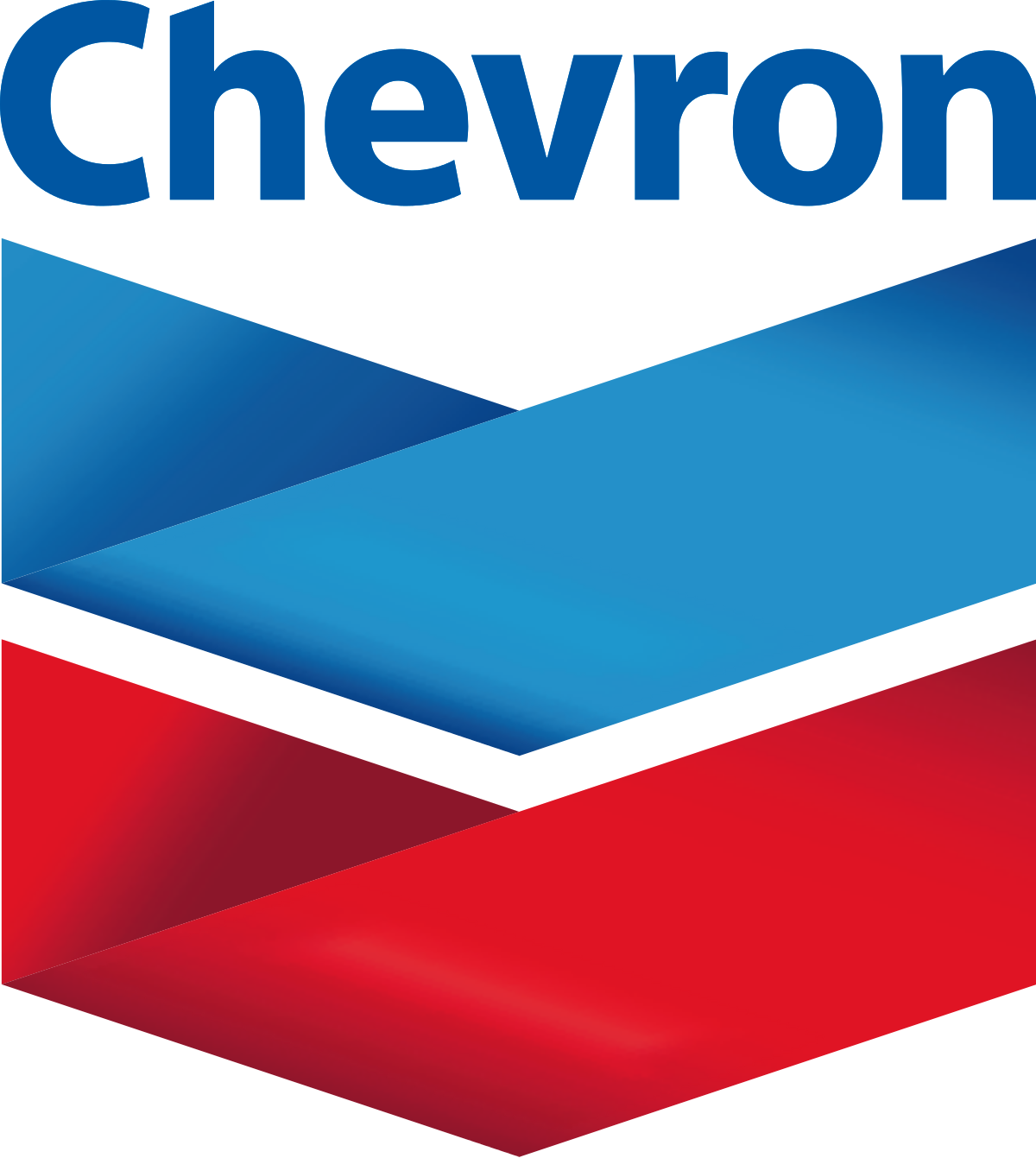雪佛龙公司 (CVX.US) 2025年第二季度业绩电话会
文章语言:
简
繁
EN
Share
Minutes
原文
会议摘要
Chevron discusses maintaining a balanced portfolio through exploration and operational efficiencies, highlighting successes in various regions, LNG strategy, and the impact of the Hess merger on free cash flow and shareholder distributions.
会议速览
Katie, as the meeting coordinator, hosted Chevron's second quarter earnings conference call for 2025. She introduced the participants to the call and reminded them to remain on mute during the call. She also mentioned how to request assistance during the meeting. The meeting was attended by Chevron's Chairman and CEO, Vice Chairman, CFO, etc., who discussed the earnings situation via phone and web broadcast and highlighted the estimated and forward-looking statements included in the meeting.
In the second quarter, Chevron achieved several important milestones, including record-breaking global and U.S. production, successful acquisition of lithium-rich land to establish domestic lithium operations, and returning a significant amount of funds to shareholders. In addition, the company successfully completed the merger with Hess, further strengthening its position as an international energy giant and gaining long-term, low-cost growth opportunities in Guyana.
Chevron's expansion in the Bakken region has significantly increased its oil and gas production, making it the largest landholder in the Gulf of America region, with overall U.S. production significantly increasing in just a few years. Through proactive integration and stock buyback strategies, the company expects to achieve annual operational synergies of tens of billions of dollars within the expected timeframe, and to achieve cash flow growth from transactions in the fourth quarter. In addition, Chevron has a unique and long-standing production position in the Permian Basin, achieving significant organic production growth and significant cost reductions through innovative technology and efficient operational strategies. Financially, the company reported strong profits in the second quarter, driven by high-margin production growth, strong operational reliability, and capital discipline, despite a decline in oil prices, adjusted free cash flow still achieved a significant increase.
Chevron announced that in the past years, it expects to achieve industry-leading free cash flow growth through the attainment of key project milestones. It is noted that production in the Americas Basin has been fully ramped up in the TCO FGP project, while significant production milestones have been achieved in the Permian Basin, allowing for moderate growth control, reduced capital expenditures, and increased free cash flow. The company expects to achieve $2 billion in annual cost savings by the end of this year, and through the integration of legacy assets, additional free cash flow is expected to exceed the incremental dividend from the merger. As a result, Chevron has raised its 2026 additional free cash flow guidance to $12.5 billion. In the Permian Basin, with capital expenditure adjustments, the company plans to further reduce capital expenditures to sustain cash flow and long-term value. At Investor Day, Chevron will share more details about capital expenditure adjustments and free cash flow growth.
Hess company has had detailed discussions on its $1 billion cost-saving plan and independent projects, expressing high confidence. The company has successfully achieved expected production improvements in projects such as TCO, Permian, and Gulf of America, while capital project initiation work has been completed and assets are gradually reaching expected capacity. In addition, the cost reduction plan is progressing according to budget and is expected to significantly impact profits by the end of this year. The additional $1 billion cost-saving target is mainly derived from synergies in loan rates and future years of production growth, especially with the launch of the fourth and fifth FPSOs expected to bring significant production increases. Overall, most key milestones have been achieved and the company is currently on track.
In the discussion, mention was made of Chevron's new organizational restructuring, emphasizing that this adjustment is based on the company's expanding asset scale, concentration of asset categories, and continuous technological development. By consolidating similar businesses, accelerating the application of best practices, standardizing and scaling work, as well as leveraging digital twin technology and global facility maintenance planning, the company aims not only to achieve cost reductions but also expects to see significant improvements in overall system performance, including operational execution, major project delivery, and turnover efficiency. Despite an overall reduction in staff numbers, the company hopes to achieve comprehensive performance improvements beyond cost savings by streamlining workflows so that employees can complete tasks more efficiently.
In the discussion, the company detailed its strategy for integrating the tight oil reservoirs (including Permian, DJ, Bakken) after acquiring Hess, emphasizing the importance of balancing growth with free cash flow. The company's goal is to maintain stable production from the tight oil reservoirs through capital and operational efficiency improvements, generating significant cash flow to support the entire investment portfolio, strengthen the balance sheet, safeguard dividends and share buybacks. At the same time, the company highlighted the importance of a balanced portfolio of short-term and long-term investments to achieve stable, predictable cash flow inflows, and ultimately return some cash flow to shareholders.
In the discussion, Chevron expressed interest in acquiring Hess's assets in the Bakken region of North Dakota, emphasizing that this would strengthen its position in the shale and tight oil fields. Despite Hess's U.S. operations showing negative free cash flow in the report, Chevron believes that by leveraging the experiences of Noble and PDC, combining Hess's unique capabilities in the Bakken region with Chevron's unconventional oil and gas capabilities, efficiency and value can be increased. As for the special financing structure of Hess Midstream, Chevron stated that they will handle it in a value-driven manner and plan to further discuss long-term development plans at an investor day.
An American company continues its oil production activities in Venezuela, despite facing sanctions from the US government. The company is closely cooperating with the government to ensure compliance. Recently, a limited amount of Venezuelan oil will flow to the United States in accordance with the sanction policy, which will help meet the demand of US refineries for heavy crude oil and also assist the company in gradually recovering its debts in Venezuela. The company is committed to complying with local laws and US sanction policies in all operating countries.
Discussed ExxonMobil's successful operational performance in multiple projects, including the Gulf of Mexico, Permian Basin, Tengiz, and Australia's liquefied natural gas projects. Emphasized the contribution of operational efficiency, production efficiency, turnover management, and the start-up of light oil projects to increasing capacity and efficiency, while also mentioning the successful turnover performance and improved production efficiency in 14 key assets.
During the discussion, it was mentioned that although the exploration results in the past few years have been less than satisfactory, the company recognizes the importance of exploration in balancing and diversifying its investment portfolio. With the increase in resources and reserves in the shale business, the company has reduced exploration investments, but is now considering adjusting its exploration plans and methods to improve efficiency.
The discussion emphasized the importance of exploration in the company's future investment portfolio construction, and clarified the strategy of balancing exploration in mature and frontier areas. The company has achieved success in recent exploration projects in infrastructure-enabled areas, and has expanded exploration work in frontier regions such as Suriname, Namibia, and Egypt by deploying drilling operations. At the same time, the company has undergone internal organizational changes, including strengthening decision-making centralization and introducing new talent to improve exploration efficiency and effectiveness.
The discussion focused on the strategic updates on natural gas in the Eastern Mediterranean, including potential upgrades and expansions of the Leviathan project, as well as the development plans for the Aphrodite project. It was mentioned that in order to maintain stable energy supply in the region, progress is being made on the Tamar and Leviathan projects, with expectations for these projects to come online later this year or early next year, increasing production capacity. Additionally, Cyprus' Aditi project is also undergoing front-end engineering design, progressing smoothly in cooperation with the local government, with approved plans moving towards a final investment decision (FID), while also considering utilizing the Egyptian market as part of the regional market.
The company is very satisfied with the overall operating performance of Teng's Operation, thanks to the efforts of the team, from Lyda's FP to the increase in nominal production capacity, showing a continuing positive momentum. With the integrated operation control center included in future growth project investments, the company can optimize the entire system, including wells, factories, and all other parts, and is currently beginning to tap into the potential of this system. Despite planned maintenance activities in the fourth quarter, the company expects to continue to improve operational efficiency and maintain the current positive momentum.
In this conversation, Betty G's main focus on the questions raised by Barclays were on the significant increase in dividends from subsidiary companies and their relationship with TCO's performance exceeding expectations. The respondent elaborated on the rapid improvement in TCO's performance in the first quarter, leading to continued production growth in the second quarter accompanied by price hikes, resulting in higher dividends. Furthermore, he pointed out that loan repayments will be seen for the first time in the third quarter, and the adjusted free cash flow metric will include dividends from equity subsidiaries, which will further impact future dividend figures.
During the discussion, it was mentioned that loan repayments will flow through cash from investment flows and ultimately be integrated into the adjusted free cash flow metric. In terms of Gulf of America's business performance, the company expressed satisfaction, noting that its performance exceeded expectations, thanks to efficient operation of assets and phased development strategies such as water flooding, multiphase pumping, and well stimulation projects. The company plans to continue maximizing its assets in the region, expecting to generate high cash flow in the future. Additionally, the company has become the largest leaseholder in Gulf of America through the acquisition of Hess, providing more opportunities for future investments and developments.
The company has increased its annual throughput of liquefied natural gas (LNG) to X million tons, mainly by the end of this decade. Although the company already has some long-term LNG agreements, its strategic focus is on building a globally connected LNG portfolio to optimize the use of natural gas production from the United States and Australia, meet global market demands, and maximize profits. Through offshore arrangements in the Gulf of Mexico, the company is able to access multiple profit spaces, allowing them to flexibly transfer products to the most profitable markets.
The discussion focused on issues related to capital allocation, especially with regards to stock buyback plans. It was mentioned that previous expectations and guidance from the Hes transaction have been taken into account, and due to delays in transaction approvals, the company has adopted different strategies for buying back stocks, including purchasing Hess shares at lower prices. The company plans to update its future outlook and guidance on stock repurchases at the Investor Day in November.
Kazakhstan is currently planning to achieve economic diversification through increasing oil and natural gas production, as well as investing in petrochemical capacity. The country has abundant natural gas resources, but currently most of the gas is reinjected into oil fields. At the same time, Kazakhstan faces the challenge of better connecting production with market demand, and may therefore need to invest more in domestic infrastructure. Through cooperation with other countries, Kazakhstan is seeking to make progress in its energy and economic diversification goals.
In this discussion, Chevron emphasized its multi-year plan in capital investment intensity, particularly in expanding its upstream business. Facing increasing capital expenditures, the company pledged to maintain capital discipline, focusing on investing in the best opportunities, while actively seeking asset divestments to optimize its portfolio. Chevron also mentioned its exploration plans and project investments in multiple regions globally, such as the development in Guyana and Bakken, as well as investments in petrochemical projects. The company plans to further share its enhanced investment portfolio and continued capital discipline strategy at an upcoming investor day, and how it aims to achieve shareholder value and growth through these strategies.
要点回答
Q:What were the key achievements of Chevron in the second quarter?
A:Chevron's key achievements in the second quarter included setting a quarterly production record, both in the US and worldwide, acquiring lithium-rich acreage in Texas and Arkansas, returning over $12 billion to shareholders, and closing the merger with Hess Corporation.
Q:What are the details of the merger with Hess Corporation?
A:The merger with Hess Corporation was closed successfully, bringing together world-class assets, people, and capabilities to create a premier international energy company. It added long-term, low-cost growth in Guyana.
Q:How has Chevron's production performance changed over the years?
A:Chevron's production performance has shown significant growth. In the US, production is nearly 4 billion barrels of oil equivalent per day higher than it was just 4 years ago, and the combined upstream portfolio has interests in some of the most attractive basins worldwide, forecasted to lead the industry in total cash generation over the remainder of the decade.
Q:What are the highlights of Chevron's upstream business in the Permian Basin?
A:The highlights of Chevron's upstream business in the Permian Basin include a unique position that traces back to the Texas Pacific Land Trust, producing nearly as many royalty barrels as the next largest royalty producers combined, capturing significant efficiencies, and reducing development and production unit costs. Chevron has nearly doubled production organically while maintaining a strong advantage in their royalty position.
Q:What restructuring efforts have been made by Chevron in the upstream segment?
A:Chevron has made efforts to reduce the number of reporting units by approximately 25% and bring together similar assets. This has allowed them to scale best practices, standardize solutions, and streamline support. The engineering hubs are designed to drive standardization, efficiency, and value, and Chevron is seeing benefits from centralized well design and turnaround planning.
Q:What are the financial results and growth indicators for Chevron in the second quarter?
A:In the second quarter, Chevron reported earnings of $2.5 billion or $1.45 per share, with adjusted earnings at $3.1 billion or $1.77 per share. They generated cash flow from operations excluding working capital of $8.3 billion and an adjusted free cash flow of $11.5 billion. They also saw a 24% decrease in adjusted upstream earnings and a 4% increase in adjusted downstream earnings compared to the previous quarter.
Q:What production and guidance figures are mentioned for the second quarter and the remainder of the year?
A:Second quarter oil equivalent production was up over 250,000 barrels per day from the last quarter due to strong performance in the base business and solid execution in growth assets. For the first half of the year, production growth is now expected to be closer to the top end of the 3 to 5% guidance range excluding hedging. Chevron is ramping up production from major project startups, and as a result of cost reductions and structural cost benefits, they expect to achieve $12 to $14 billion in annual run-rate savings by the end of the year.
Q:What was the outcome of the arbitration win and how does it affect the company's spending?
A:The outcome of the arbitration win was a positive one, and it removed a source of uncertainty for the company. In terms of spending, the company has moderated its capital expenditures (CapEx), having already moved past the peak CapEx phase. The spending is now expected to be in the lower end of the previously communicated range as the company finishes the year, driven by operational efficiencies.
Q:What factors have led to the derisking of the $15 billion budget, and how are the synergies expected to be achieved?
A:The derisking of the $15 billion budget is attributed to several factors: full production rates at the TCO, achieving significant milestones in the Permian, progress with major capital projects startups in the Gulf of Mexico, and the cost reduction program. These factors, along with the commitments to deliver $4 billion of synergies by the end of the year and production growth from new assets like the fourth FPSO coming online this year and a fifth next year, contribute to the expected cost savings and the achievement of the budget goals.
Q:How does the new organizational structure differ from the current one, and what benefits are expected from these changes?
A:The new organizational structure is expected to build on the company's existing scale and asset class strengths while moving towards a more centralized model to unlock incremental value. This involves gathering like businesses together, applying best practices quickly across different locations, and leveraging technology and digital twins for better operational efficiency. The changes are also expected to result in performance improvements across the system, not just cost reductions, by simplifying processes and enabling the workforce to be more effective.
Q:What is the current size of the company's production in shale and type, and how does it relate to its overall upstream production?
A:The company's production in shale and type is going to push up close to 1.6 million barrels a day, which is a substantial portion and one of the larger figures compared to many companies. This production contributes significantly to the company's overall upstream.
Q:How will capital efficiencies and operating efficiencies impact the company's cash flow and investment strategies?
A:The company plans to apply capital, operating, and drilling efficiencies to maintain plateau production, which will allow a significant amount of cash to be available for investment across the rest of the portfolio. This cash will also support balance sheet strength, the dividend, and share repurchases, and the company aims to achieve a balanced portfolio with short and long cycle investments.
Q:What is the company's strategy regarding growth and free cash flow?
A:The company's strategy is shifting towards prioritizing free cash flow over growth. The transition is nearing completion, as evidenced by their approach with the Bakken production and Hess' business reporting.
Q:Is the company considering divesting from the Bakken business, and why?
A:The company is considering the potential for more efficient financing structures, like Hess Midstream's, in the Bakken business. They are value-driven regarding how they handle the business over time, and a decision on divestment is anticipated to be discussed further in their Investor Day.
Q:How are the company's operations in Venezuela currently affected by the country's political situation and U.S. sanctions?
A:The company continues to operate in Venezuela and believes its presence contributes to regional energy security and American economic interests. After a license change in May, they have been working with the US government to ensure compliance with sanctions policies. They expect limited oil production from Venezuela to flow to the U.S. and that this will not have a material impact on their results, though it will help satisfy some debts. The company will continue to operate in accordance with all applicable laws and regulations, including U.S. sanctions policies.
Q:What is the right target for exploration going forward in light of current production from US shale?
A:The right target for exploration going forward will be announced by Mark, but it is implied that it will play an important role in the company's overall portfolio. The company acknowledges the need for a balanced and diversified portfolio with exploration being a significant part.
Q:Is the company happy with the results of its recent exploration program and what changes are planned?
A:The company is not happy with the results out of exploration over the last few years. They acknowledge that the team has operated within a narrow range and reduced investment for capital discipline reasons. However, as the company moves towards a plateau and focuses on the need for a balanced and diversified portfolio, significant changes are being made to the exploration program and approach.
Q:What is the company's strategy for balancing mature and frontier areas in exploration?
A:The company's strategy for balancing mature and frontier areas in exploration involves focusing on both replenishing resources in mature areas with existing infrastructure and exploring high-impact frontier areas for future resources. The goal is to maintain a balanced portfolio that ensures investments in the company's existing assets are replenished while also preparing for the future.
Q:Can you describe recent successes and new frontier acreage acquisitions in exploration?
A:Recent successes in exploration include opening up new areas such as the Gulf of Mexico, Nigeria, the Partition Zone, and Angola. The company has also been restocking frontier acreage, acquiring new portfolio assets that have increased the portfolio by over 1 Ed. Future plans include drilling wells in Suriname, Namibia, and Egypt, further emphasizing the importance of frontier exploration.
Q:What changes are being made to the company's exploration organization and decision-making process?
A:The company is implementing changes to its exploration organization by streamlining operations and bringing in talent from the Hess team and others. The decision-making process is also being tightened with an enterprise focus, integrating more centralized decision-making and execution.
Q:What is the company's strategy regarding the Eastern Mediterranean and potential projects like Leviathan and Aphrodite?
A:The company's strategy for the Eastern Mediterranean focuses on maintaining energy supplies for the region and keeping growth projects like Tamar and Leviathan on track, which are expected to come online late this year or early next year. The company sees more growth potential in the region and is advancing projects like Aditi and is considering options for Aphrodite, pending competitive returns.
Q:What is the outlook for the TCO project and how is the performance above nameplate sustainable?
A:The company is very pleased with the strong operational performance at TCO, which is operating above nameplate capacity. This performance is sustainable due to the integrated operation control center that optimizes the entire system, including wells and plants. The company anticipates continued improvement through maintenance activities and positive momentum.
Q:How is the company viewing the evolution of the affiliates distribution in light of strong cash flow generation?
A:The company recognizes that the second quarter saw a significant increase in affiliates distribution due to higher production and prices, which ramped up faster than anticipated. Going forward, the company expects adjustments to reflect the higher production and pricing environment, and the third quarter will include the first loan repayment which will affect adjusted free cash flow and distribution expectations.
Q:What will the billion of loan repayments affect in the company's financial metrics?
A:The billion of loan repayments will be included in the adjusted free cash flow metric shared today.
Q:What is the significance of the Gulf of America within the company's portfolio?
A:The Gulf of America is a significant investment area for the company, with an improved recovery from base assets through stage developments and further opportunities for investment due to its size and location.
Q:How has the company's performance in the Gulf of America been and what factors contribute to it?
A:The company's performance in the Gulf of America is strong, with a script of barrels a day production growth expected to be leveraged across the decade. This is due to the ramp up of anchor and balmores and the full leverage of base assets.
Q:What is the approach to managing the LNG portfolio and how will it impact strategy and risk?
A:The company has some existing take-or agreements and plans to place some volume, but more actions need to be taken. The strategy involves a globally connected LNG portfolio, balancing long-term placements with short-term flexibility.
Q:What has been the impact of the delayed buyback on the company's shares and what is the plan moving forward?
A:The buyback has been delayed due to actions of others, but the company has purchased more shares than anticipated. Going forward, the company will review its forward outlook and guidance for share repurchases at the investor day in November, considering the integration of Hess and the commodity price environment.
Q:How important is domestic oil and gas production to Kazakhstan's economic diversification plans?
A:Domestic oil and gas production is significant to Kazakhstan's economic diversification, as the country looks to utilize its energy wealth in refining, petrochemicals, and gas to participate in other parts of the value chain.
Q:What is the role of Severn Phillips Chemicals in the Republic's petrochemical plant investment?
A:Severn Phillips Chemicals, an affiliate of the speaker's company, has taken a look at the petrochemical plant investment in the Republic in the past.
Q:What is the expected change in Chevron's capital expenditure and reinvestment strategy following the deal?
A:Chevron is expected to see a step-up in capital expenditure (CapEx) as a result of the deal closing, primarily due to the development needs of the larger system and the investments required in various projects and regions around the world.
Q:How will Chevron manage its capital investments and asset divestitures in light of the new developments?
A:Chevron will manage its capital investments and asset divestitures by focusing on investing in the best opportunities, divesting assets that do not compete for capital, and maintaining its reputation for capital discipline. The company will continue to look for opportunities to enhance returns and free cash flow to support distributions to shareholders.
Q:What future event is Chevron planning to hold and what topics will it cover?
A:Chevron is planning to hold its next Investor Day on November 15 in New York City. The event will cover how the company views its new and strengthened portfolio, reiterate the consistency of its strategy, and its fundamental commitment to capital discipline and superior shareholder returns. The company intends to share its plans for continuing growth and shareholder value.

Chevron Corp.
Follow





